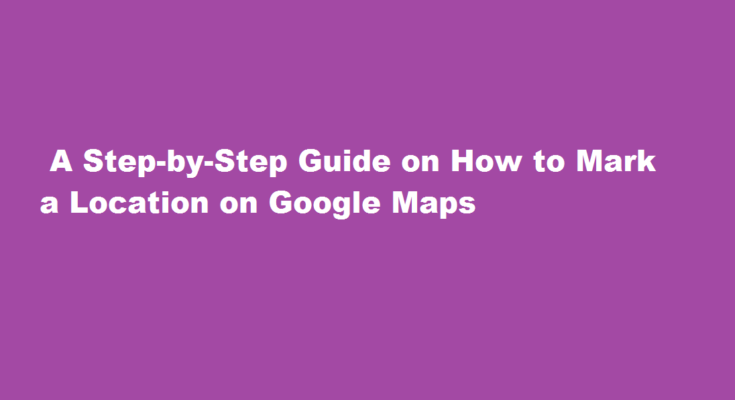Introduction
Google Maps has revolutionized the way we navigate and explore our world. From finding the best routes to discovering new places, this powerful tool offers a range of features to enhance our everyday lives. One such feature is the ability to mark specific locations, allowing us to remember and share important points of interest. In this article, we will provide a step-by-step guide on how to mark a location on Google Maps, enabling you to make the most of this convenient and practical feature.
Accessing Google Maps
To begin, open your preferred web browser or launch the Google Maps app on your mobile device. Ensure you are signed in to your Google account for a seamless experience. Google Maps can be accessed through the Google search engine or by visiting the dedicated website at www.google.com/maps.
Searching for the Desired Location
Once you have Google Maps open, the next step is to search for the location you wish to mark. You can enter the address, name, or even general keywords associated with the place you are looking for in the search bar. Google Maps will display a list of suggestions based on your input, making it easier to find the exact location you have in mind.
Navigating to the Location
After selecting the desired location from the search results, Google Maps will automatically zoom in on the area. You can use the various navigation controls, such as zooming in and out or dragging the map, to adjust the view and get a better perspective. Take your time to ensure the map is centered on the precise spot you want to mark.
Marking the Location
To mark the location, right-click (or long-press on mobile) anywhere on the map. A menu will appear with several options, one of which is “Add a marker.” Clicking on this option will drop a pin onto the map at the chosen spot, signifying the marked location. The marker will be accompanied by a small pop-up box where you can add additional information or notes about the place.
Customizing the Marker
Google Maps allows you to customize the appearance of the marker to make it more recognizable or personalized. To change the default red pin, click on the marker you just placed on the map. A card will appear with options to edit the marker’s color, shape, and icon. Select your preferred settings, and the marker will be updated accordingly.
Adding Details to the Location
If you wish to provide more information about the marked location, you can add details to the marker. Click on the marker you created, and a small window will appear. Within this window, you can include a title, description, and even attach photos or videos. These details will be accessible to you and can be shared with others if desired.
Saving the Location
To ensure your marked location is saved and easily accessible, click on the “Save” button within the marker’s information window. A list of available save options will appear, including “Favorites,” “Want to go,” or custom lists you have created. Choose the appropriate option, and the location will be saved for future reference.
FREQUENTLY ASKED QUESTIONS
How do I add a question to Google Maps?
On your computer, open Google. Search for a place. Under the information card for the place on the right side, click “Ask a question” next to the “Questions & answers” section.
What is an answer box on Google?
On the search engine results page, the answer box lists what Google deems is the best answer to the query. It’s positioned below the search query and above the organic results. (Note: Not every search includes an answer box.)
Conclusion
Marking a location on Google Maps is a simple and convenient way to remember and share points of interest. Whether it’s a favorite restaurant, a hidden gem, or an important meeting place, this feature allows you to personalize your map experience. By following the step-by-step guide provided in this article, you can make the most of Google Maps’ location marking feature and enhance your navigation and exploration endeavors.
Read Also : Mastering The Art of Setting up Out of Office in Outlook



